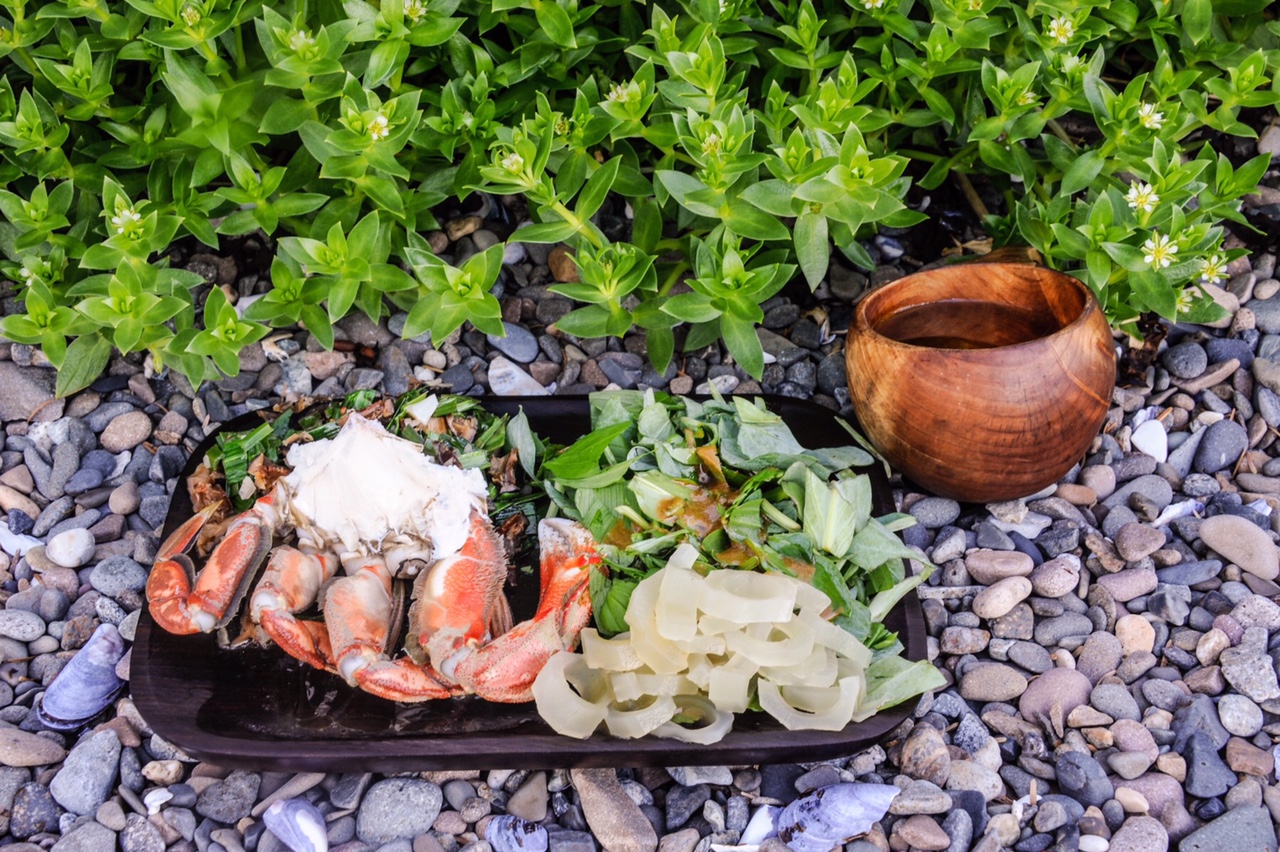Two weeks into our wild food sea kayaking trip in Southeast Alaska, we woke up a couple days paddle outside of Juneau. Fishing had been poor and putting miles between us and the busyness of Juneau had led us to the first morning of the trip when we woke up to nothing in the larder for breakfast.
No worries. As they say in Southeast Alaska, “When the tide is out the table is set.” And the tide was out. In fact, this was one of the lowest tides of the month. Buckets and knives in hand we trundled off to the reef, stepping over baseball size cockles. It seems everything in this part of the world grows to gigantic proportions.
Water squirted in front of our footsteps, like a tiny geyser field. This was a rich clam bed. Unfortunately, neither of these filter-feeding bivalves were on the menu. A paralytic shellfish poisoning alert had been issued for most of Southeast Alaska. Many people blame warmer water temperatures. Whatever the cause, the result was we couldn’t eat any of these tempting morsels. The risk of encountering toxins that could result in a paralysis of the muscles that control breathing was too daunting for us.
Fortunately, limpets the size of half-dollar coins, and an impressive population of bidarkies, the local name for chitons, were also plastered to the reef. These critters are grazers. Their job is to clean the rocks. Since they are not filter-feeders, and the alga which causes PSP is water born, these little delectables were most definitely on the menu.
Photo: Fredrik Norrsell
I focused on prying limpets off the rocks. The little capped shaped shells were so abundant, it felt like blueberry picking. However, if I failed to get the knife quickly and cleanly under the shell, the muscular clamp down to the rock reminded me I was dealing with a living creature.
Fredrik honed in on the larger prey, bidarkies. While I enjoy the taste of them, the texture of chitons lives up to its third name, gummy boots.
After a breakfast of limpets and goose tongue, it was time to start looking for dinner. We paddled out into the cove with a crab ring. The ring is a collapsible basket that lies flat on the ocean floor until you drag it up, hopefully with a crab inside. Bobbing off shore tending the ring seemed a slow way to hunt, but experience had taught me that leaving it unattended for long resulted in lost bait. And a well-fed crab, also gone.
Sitting on the water with the line between my fingers waiting for a tiny jiggle proved pleasantly meditative on a calm, sunny day. I hadn’t felt any motion yet, so I didn’t know exactly what I was waiting for, but I waited all the same. A few false alarms, and then, there it was. I pulled a crab up quickly so he couldn’t scamper out of the basket. He was a male and over six-and-a-half inches wide. This guy was legally dinner. A tangle of net and claws and I had him on board. Three of these would make a great meal, but the wind came up and it was time to head back to shore.
Dinner Recipe – A Seafood Extravaganza.
One dungeness crab boiled in salt water.
Bidarkies, boiled, cleaned and diced, with goose tongue, onion flakes and black pepper, sautéed in olive oil.
Salad – Oyster leaf, twisted stalk leaf, beach pea greens, beach greens and beach lovage.
Salad dressing – Olive oil, soy sauce and brewers yeast. (For a creamy at home version add yogurt and mayonnaise.)
Candied bull kelp – Use the top nine inches or so off a young bull kelp. Skin, slice and boil until tender. Drain and marinate for a few days in sugar and lemon juice.
Explore more of Nancy and Fredrik’s work here and stay posted for future dispatches from their summer-long kayak subsistence trip in Southeast Alaska.




